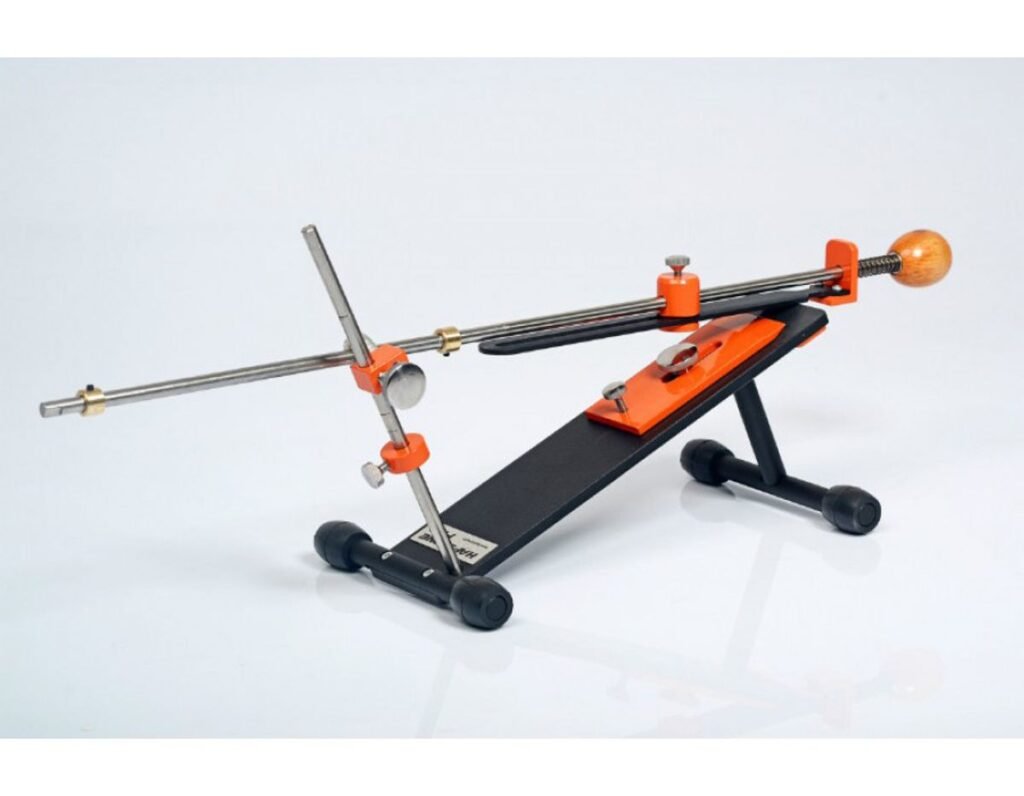A sharp knife makes cooking faster, safer, and more enjoyable. Dull blades, on the other hand, can slip, cause accidents, and make cutting food frustrating. That is why knife sharpeners are so important.
Knife sharpeners help restore the edge of a blade. They bring back sharpness so that every slice is smooth and precise. Whether you are a home cook or a professional chef, using the right sharpener can make a big difference.
This guide will explain the types of knife sharpeners, how they work, and how to choose the best one for your needs.
Why Sharp Knives Matter
Sharp knives are not just about convenience; they are also about safety. A sharp blade cuts cleanly without extra force. A dull knife requires more pressure and can slip, leading to injuries.
In cooking, sharp knives also improve presentation. Vegetables, meats, and herbs look neater and taste better when cut cleanly. Even simple tasks like slicing bread or dicing onions are easier with a sharp edge.
Knife sharpeners keep blades in top condition so they last longer and perform better.
Types of Knife Sharpeners
There are many kinds of knife sharpeners, each with its own benefits. Here are the most common types:
1. Manual Knife Sharpeners
Manual sharpeners are small, affordable, and easy to use. They often have slots where you pull the knife through to sharpen. These are perfect for home kitchens because they do not take much space.
2. Electric Knife Sharpeners
Electric sharpeners use rotating wheels or belts. They are faster than manual ones and deliver consistent results. Many chefs prefer electric sharpeners because they save time.
3. Whetstones (Sharpening Stones)
Whetstones require skill but give the best control. By sliding the blade over the stone at the right angle, you can get a razor-sharp edge. Professional chefs and knife enthusiasts often use whetstones.
4. Honing Rods
Honing rods do not sharpen a blade but help maintain its edge. They realign the blade and keep it sharp between sharpenings. Many kitchens use them daily.
5. Professional Knife Sharpening Machines
For heavy-duty use, professional-grade machines provide precision and durability. These are often used in restaurants, butcher shops, and culinary schools.
How Knife Sharpeners Work
Knife sharpeners work by grinding away small parts of the blade. This reshapes the edge and makes it sharp again.
Manual and electric sharpeners often use ceramic or diamond-coated surfaces. Whetstones rely on grit levels, which can be coarse for reshaping or fine for polishing.
The goal is always the same: to create a fine, sharp edge that cuts easily.
Choosing the Right Knife Sharpener
When choosing a sharpener, consider your needs.
- For home cooking: A manual or electric sharpener is simple and quick.
- For professionals: Whetstones or professional machines give better precision.
- For maintenance: A honing rod helps keep knives sharp between full sharpenings.
Also think about the type of knives you own. Serrated knives, Japanese blades, and chef’s knives may need different sharpening tools.
Benefits of Using Knife Sharpeners
Using knife sharpeners has many clear benefits:
- Improved safety – Sharp knives are less likely to slip.
- Better cooking results – Food cuts cleaner and looks better.
- Longer knife life – Regular sharpening prevents damage.
- Saves money – You don’t need to replace knives as often.
- Efficiency – Cooking becomes faster and easier.
Tips for Using Knife Sharpeners
- Always read the instructions for your sharpener.
- Use the correct angle, usually around 15–20 degrees.
- Do not oversharpen, as it can wear down the blade.
- Clean knives after sharpening to remove metal particles.
- Practice makes perfect, especially with whetstones.
Common Mistakes to Avoid
Some users damage their knives by sharpening them the wrong way. Here are mistakes to avoid:
- Applying too much pressure on the blade.
- Sharpening at the wrong angle.
- Using the wrong sharpener for the knife type.
- Forgetting to hone the knife between uses.
- Sharpening too often, which wears the blade.
Professional Knife Sharpening Services
For those who prefer not to sharpen knives at home, professional services are available. Many local shops and online companies offer sharpening. These services use advanced tools and experienced hands to restore blades to factory sharpness.
Professional sharpening is useful for expensive knives, as it ensures the best care without risk of damage.
FAQs
1. How often should I sharpen my knives?
Most home cooks should sharpen every few months. Professionals may sharpen weekly.
2. Can I use one sharpener for all knives?
Not always. Serrated or specialty knives may need specific tools.
3. Are electric sharpeners safe for expensive knives?
Yes, if used correctly. Choose high-quality electric sharpeners for delicate blades.
4. What is the difference between honing and sharpening?
Honing realigns the blade, while sharpening grinds a new edge. Both are important.
5. Do knife sharpeners wear out?
Yes. Over time, stones, wheels, or rods may lose effectiveness and need replacing.
Conclusion
Knife sharpeners are essential tools for both home cooks and professional chefs. They keep blades sharp, safe, and ready for use. With many options available—manual, electric, whetstone, or professional—there is a sharpener for every need.
By choosing the right sharpener and using it correctly, you can extend the life of your knives and enjoy better cooking every day. A small investment in sharpening tools brings long-lasting results in the kitchen.
